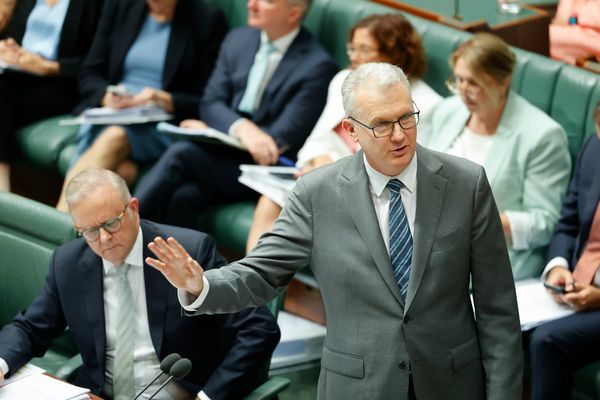Axiom Space officials may be taking three civilians up to the International Space Station at $55 million a seat along with their own employee, but they’d prefer not to be known as a space tourism company.
“They’re not up to the paste their nose on the window,” said company president and CEO Michael Suffredini during a press conference Monday. “They really are going up there to do meaningful research and make a difference, each in their own way.”
Hitching a ride with SpaceX on a launch from Kennedy Space Center targeting March 30, the AX-1 mission is the first of four contracted flights using the Crew Dragon to bring civilians to the space station. Previous civilian visitors to the ISS have all come from Russian Soyuz flights.
The crew include paying customers Larry Connor, Mark Pathy and Eytan Stibbe along with commander Michael López-Alegría, a veteran of three space shuttle flights and a 215-day stint on the space station.
While the passengers are paying out significant money, Axiom Space’s goal is to eventually build out its own commercial space station with a planned September 2024 launch of a module to be connected to the ISS. More pieces will be flown up afterward and it will eventually be able to disconnect from the ISS and become its own destination.
“This is our very first mission of probably hundreds of missions to come over the next several decades as we build the the Axiom Space Station and provide these sort of services in low Earth orbit for many decades to come,” Suffredini said.
The 10-day mission will see the quartet traveling in Crew Dragon Endeavour, which previously visited the ISS on the Demo-2 mission in May 2020 and the Crew-2 mission that was docked on the station from April-November last year. The spacecraft will also be taking home some science and other cargo from the space station when it splashes down off the Florida coast with a target return date of April 9.
López-Alegría said he and the other crew have been the first to go through NASA’s private astronaut checklist in Houston in addition to training with SpaceX in Hawthorne, California, to familiarize what’s required to fly in the Dragon.
“This mission is very different from what you may have heard of, in some of the recent, especially, suborbital missions. We are not space tourists,” said López-Alegría. “I think there’s an important role for space tourism, but it is not what Axiom is about.”
Each of the three civilians has lined up experiments in conjunction with partner organizations such as the Mayo Clinic, the Royal Canadian Geographical Society and the Ramon Foundation. In total, the mission will feature 26 experiments run in conjunction with the ISS National Lab, including some for Axiom Space to be used on its future space station plans.
“My crewmates have worked very hard. I’ve been super impressed with their diligence and their commitment,” he said. “They’re busy people and they’ve taken a lot of time out of their lives to focus on this and it’s definitely not a vacation for them.”
Christian Maender, Axiom’s director for in-space research and manufacturing said the crew will be participating in both pre- and post-flight experiments as well.
“We have a serious research-focused mission,” he said. “It’s really leveraging the opportunity of the ISS to really magnify what the ISS is there for, what we use it for every day for research and really kick off some important efforts about building a low Earth orbit economy.”
He said the experiments include several life science deep dives, but also some technological demonstrations such as how to build infrastructure, including spacecraft, in space.
“When we talk about realizing the vision for LEO and an LEO economy, this mission is kind of the flag bearer for not only a standard for private astronaut missions for the future, but the future of research in microgravity,” he said.
With NASA focusing its energy on the moon and Mars, its goal is to sunset the ISS and hand off such needs to private industry. Axiom is one of several companies pursuing commercial space stations that include Orbital Reef from Blue Origin, Sierra Space and Boeing, and a station called Starlab from Nanoracks, Lockheed Martin and Voyager Space.
But with Axiom Space working directly with NASA, the company is prepared to have a freestanding station by 2028, although it could adjust to whenever the ISS is decommissioned. Recent agreements have funded the station until at least 2030.
Kathy Lueders, NASA’s Associate Administrator for Space Operations said “we’re going to do this as a team.”
“This is really another example of how we’ve been kind of laying the foundation and working together and using the investment that the nation makes in NASA to continue to impart knowledge, work with partnerships to go figure out new ways to be able to use the capability that the nation’s invested in,” she said.
When Dennis Tito became the first space tourist to visit the ISS in 2001, NASA did not approve, and he and several others in the years that followed stayed pretty much on the Russian side of the station. NASA’s official stance on what it called “space participants” shifted in 2019, though.
Lueders said it’s a juggling act to start the transition to a more constant commercial presence.
“Our crew members are focused on us getting ready for exploration, and meeting the goals that NASA has,” she said, but also “maintaining the facility and keeping us ready, so that our private astronaut friends can come up and be able to do the science and research that we need to be able to do.”







